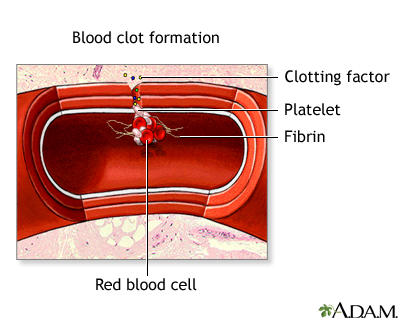Which of the following is a phlebotomist required to document on a CBC specimen label?
Patient's insurance provider name
Phlebotomist's full name
Phlebotomist's certification number
Patient's identification number
The Correct Answer is D
Choice A reason:
The patient's insurance provider name is not typically required on a CBC specimen label. While insurance information is crucial for billing purposes, it does not serve as an identifier for the specimen itself and is therefore not documented on the label.
Choice B reason:
The phlebotomist's full name is not a requirement for a CBC specimen label. The focus of documentation on the label is on patient identification and specimen integrity, not the identity of the healthcare professional collecting the specimen.
Choice C reason:
A phlebotomist's certification number is also not required on a CBC specimen label. While the phlebotomist's credentials are important for their professional status, they are not part of the necessary documentation for a specimen label.
Choice D reason:
The patient's identification number is a critical piece of information that must be documented on a CBC specimen label. This unique identifier links the specimen to the patient's medical record, ensuring that the test results are accurately recorded in the patient's health history.
Nursing Test Bank
Naxlex Comprehensive Predictor Exams
Related Questions
Correct Answer is D
Explanation
Choice A reason:
Heparin is an anticoagulant, not a clot activator. It works by inhibiting thrombin and preventing the conversion of fibrinogen to fibrin, thus preventing clot formation. It is commonly found in green-top tubes and is suitable for collecting plasma samples for tests like electrolyte levels and coagulation studies.
Choice B reason:
Oxalate is also an anticoagulant that prevents clotting by precipitating calcium. It is not used to promote clot formation but rather to maintain a blood sample in a non-coagulated state for various tests.
Choice C reason:
Citrate functions similarly to heparin and oxalate as an anticoagulant. It chelates calcium ions in the blood, inhibiting the coagulation process. Citrate is often used in blue-top tubes and is ideal for collecting plasma samples for coagulation studies.
Choice D reason:
Silica is a clot activator. It is commonly used in serum separator tubes (SSTs) with a gold or red speckled top. The silica particles provide a surface for the rapid formation of the clot, allowing for the separation of serum from the blood cells. This is essential when serum is needed for testing.

Correct Answer is C
Explanation
Choice A reason:
Septicemia, also known as sepsis, is a serious bloodstream infection that can be life-threatening. It is not a disorder that is screened for at birth because it is not a congenital condition but rather an infection that can occur at any time when bacteria enter the bloodstream.
Choice B reason:
Bacteremia refers to the presence of bacteria in the bloodstream and, like septicemia, is not a congenital disorder. It is not typically screened for at birth as it is an acquired condition that can occur after exposure to bacteria.
Choice C reason:
Phenylketonuria (PKU) is a genetic disorder that results in an inability to metabolize the amino acid phenylalanine. Untreated, PKU can lead to intellectual disability, seizures, and other serious health problems. Newborn screening for PKU is required in every state in the U.S. because early detection and dietary treatment can prevent the severe consequences of the disorder.
Choice D reason:
Proteinuria is the presence of abnormal amounts of protein in the urine, which can be a sign of kidney disease. It is not a condition that is screened for at birth as part of the standard newborn screening panel.
Whether you are a student looking to ace your exams or a practicing nurse seeking to enhance your expertise , our nursing education contents will empower you with the confidence and competence to make a difference in the lives of patients and become a respected leader in the healthcare field.
Visit Naxlex, invest in your future and unlock endless possibilities with our unparalleled nursing education contents today
Report Wrong Answer on the Current Question
Do you disagree with the answer? If yes, what is your expected answer? Explain.
Kindly be descriptive with the issue you are facing.
